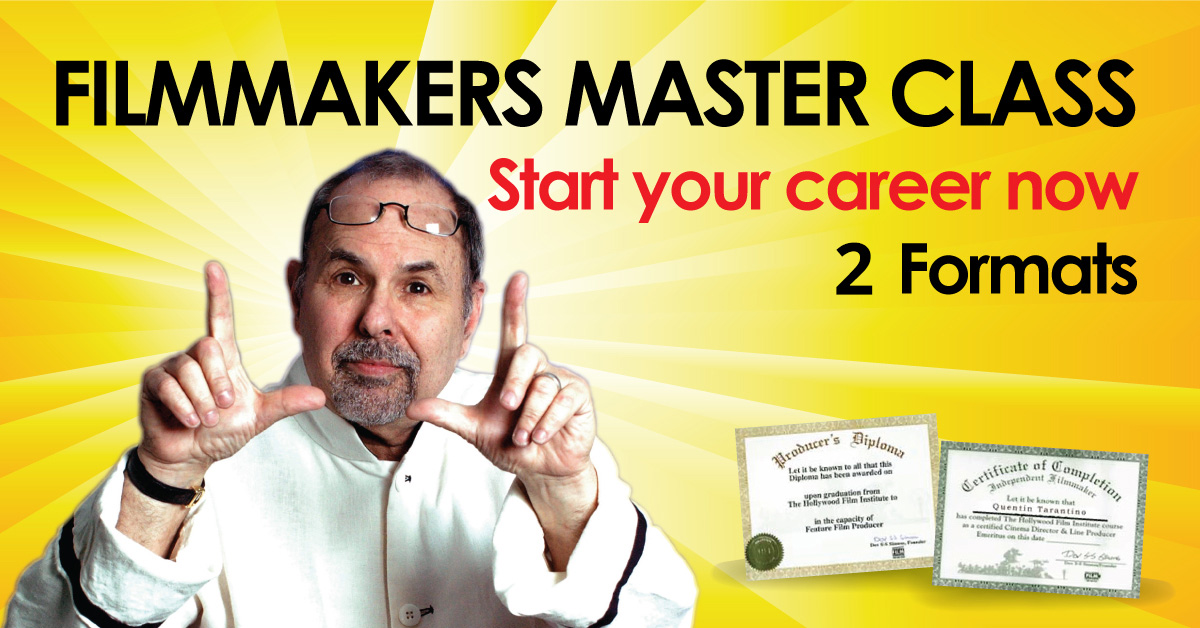THE SCREENWRITING FORMULA (10-Steps in 6-Weeks to the Great Script)
by Dov S-S Simens on January 13, 2019
Five Characteristics of a Good Scene, and Eight Signs of a Bad One
There are probably many more features that could be listed to describe scenes that “work” or “don’t work,” but here are some essentials as written by “Sreenwriters University” at the site (www.WritersStore.com) which is the best resource for Screenwriters as well as Writers, Poets, Journalists and Lyricists.

(“Always remember, “Nothing is Written… It’s Re-Written.”)
FIRST: 5 GOOD SCENE TRAITS
- The scene connects to the main character’s problem/goal for that story. It should not be about something other than that. The problem should be so pressing that it requires their constant focus, in every scene.
- It develops the problem in a new direction, which will lead to new scenes. It should not just be a “stutter step,” or failure that leaves them right where they started—it needs to “change the game.

(“As your 90-120 page script has, so too should each 1/2-3 page scene you write have, a Beginning, a Middle and an End.”)
3. It’s focused on a conflict, which builds entertainingly to a climax and “turn”. Conflict is the lifeblood of all drama and comedy, and whatever the main character of that story is trying to achieve in the scene, it has to meet with unexpected resistance.
4. It’s got a passionate, emotional point-of-view where we’re inside the main character of that story. The audience will only be engaged if they can relate to what they’re trying to achieve, and why—if they can feel for them on some level.
5. The subtext of the character’s attitude and desires behind their realistic dialogue is clear. What the main character is really after in the scene should be obvious to the audience—even if their dialogue does not always reveal that (as good and realistic dialogue usually doesn’t)
NEXT: 8 BAD CHARACTER TRAITS:

(“Always remember, also, “Writers Write and Thinkers Think”… Thus… Move-Your-Fingers.”)
- Information exchange: characters tell each other things, or tell the audience, but the nature of the problem isn’t building and developing.
- Not a necessary step in the evolution of trying to solve central story problem: if the scene were cut, nobody would miss it, because its outcome doesn’t lead to and produce other scenes.
- Not driven by a conflict/problem that builds to a climax: there is either no evident relatable problem or difficult agenda being pursued, or it doesn’t build throughout the scene and get worse.
- “Good times”/success: audiences tend to get bored when characters are happy. Characters faced with a problem and actively trying to resolve it
tends to draw audiences in. - Unclear main character motivations: if the audience doesn’t know what the main character wants, and why, they have nothing to hinge their emotional investment on, and will tend to disengage.
- Objective vs. subjective point-of-view: audiences don’t like to look down on, or at, a bunch of characters—they want to take on the perspective of someone they can connect with, and experience the story as them!
- Lack of strong driving emotion: good stories are all about an emotional experience, not an intellectual one. Characters need to feel, and feel strongly—which makes audiences feel, too…
- Not fun to watch! Television is part of the “entertainment business” and writers are paid to entertain—meaning, to deliver to audiences an emotional experience that they want to have (be that laughter, fascination, shock, connection, inspiration, romance, escapism, etc.
FINALLY: DOV’S SCREENWRITER’S FORMULA
Do these 10 baby steps (see below) and in 6-8 weeks you will have an excellent script, based on your original idea, that you own, with an excellent chance of it being Optioned or Purchased by a production company that has a development deal with a movie studio or a cable network.

(“Follow this 10-Step Screenwriter’s Outline and you will have an excellent Script within 2-Months.”)
STEP 1 (TITLE: 1-Hour): Type the Title in 1-3 words.
STEP 2 (THEME: 1-Hour): Type the Theme of the movie in 5-8 words.
STEP 3 (PITCH: 1-Hour): Type the Pitch or Logline, stating Good Guy, Bad Guy, Setting, Situation & Conflict in 15-25 words.
STEP 4 (TREATMENT: 1-Day): Type the Treatment in 3 pages stating Act I (Beginning, Page 1), Act II (Middle, Page 2) and Act III (End, Page 3)
STEP 4A (ACT I: 1-Hour): Within 3-4 lines clearly state the 5Ws & H (Who, What, Where, When, Why & How)
STEP 4B (ACT III: 1-Hour): Within 1-2 paragraphs describe the ending (Cut-To-The-Chase, Twist, Surprise, Culmination, Resolution, Epilogue)
STEP 4C (ACT II: 3-Hours): Outline 11 Scenes, the Structure of your story (5 Uh-Ohs, 5 Oh-Shots & 1 OMG).
STEP 5 (BEAT SHEET: 2-Days): Diagram your 40-50 Scenes (11-14 for ACT I), (8-10 for ACT III) and (25-30 for ACT II)
STEP 6 (1st DRAFT: 3-Weeks): Get either Celtx or Final Draft software and type 90-120 pages (see below, 6A, B & C) one scene at-a-time.
STEP 6A (SCENE I, Week #1): Type 17-26 Pages: Scene #1 (1-2 Pages, Monday), Scene #2 (1-2 Pages, Tuesday), Scene #3 (1-2 Pages, Wednesday), Scene #4 (1-2 Pages, Thursday), Scenes #5-8 (6-8 Pages, Friday), Scenes #9-14 (6-10 Pages, Saturday)1
STEP 6B (SCENE III, Week #2): Type 8-20 Pages: the 8-10 Scenes for ACT III at 1-2 pages each.
STEP 6C (SCENE II, WEEK #3): Type 65-75 Pages: the Big Middle (aka: The Story), the 25-30 scenes that comprise the 5 Uh-Ohs & 5 Oh-Shits.
STEP 7 (COVERAGE: 3-Days): Send this Script out for Independent Script Coverage ($75-$95) from three independent readers.
STEP 8 (2nd Draft: 2-Weeks): Nothing is Written… It’s Re-Written. According to Script Coverage recommendations while focusing on Dialogue, Dialogue & Dialogue do your Re-Write
STEP 9 (CYA: 2-Hours): Cover Your Ass. Register (WGA.org) and Copyright (LOC.gov) your script.
STEP 10 (SELL): Get either an Agent, a Manager or an Entertainment Attorney and send your script to Production Companies with Development Deals with Studios & Networks and prepare for “pitch meetings” and “deal making negotiations”.
Happy Filmmaking,
Dov Simens
WHY WAIT?
LEARN… TO PRODUCE, WRITE, DIRECT & DISTRIBUTE…
Want to launch your film career? Then either of my three proven film programs are perfect for you…

(Streaming! 3 Clicks. Start right now… www.WebFilmSchool.com)

(DVD! View over and over…www.WebFilmSchool.com)

(Live! Network! APR 6-7/2019, AUG 10-11/2019 or DEC 7-8/2019)
No-Theory. No-Bull.
Keep Up to date… Join our e-mail list.






Quality essays from writing services can serve as learning models for students. By comparing professionally written essays https://www.lunwentop.net/ with their own work, students can gain a better understanding of academic writing standards, structure, and language expression techniques. Over time, this learning and imitation process can enhance their writing skills.
The breakdown of good vs. bad scene traits is super helpful for refining storytelling. For anyone looking to apply similar formulaic approaches to writing in general, I found this resource really inspiring: https://writtent.com/blog/9-sure-fire-copywriting-formulas-grow-audience/ This post is packed with incredible insights for aspiring screenwriters!